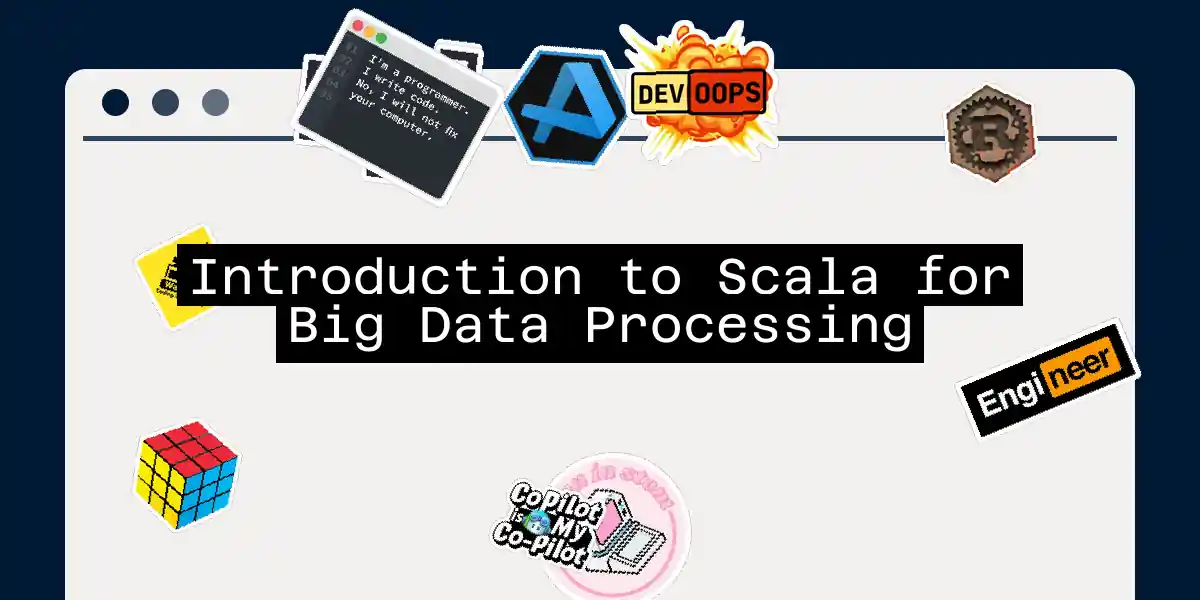Why Scala for Big Data?
In the vast and often overwhelming world of big data processing, choosing the right tool can be as daunting as trying to find a needle in a haystack. However, if you’re looking for a language that combines the elegance of functional programming with the robustness of object-oriented design, Scala is your best bet. This article will delve into the world of Scala, exploring why it’s an ideal choice for big data processing and how you can get started with it.
What is Scala?
Scala, short for “Scalable Language,” is a modern, multi-paradigm language designed to express common programming concepts in a simple, concise, and type-safe manner. It elegantly combines the features of object-oriented and functional programming languages, making it a versatile tool for various tasks, including big data processing.
Key Features of Scala
- Multi-Paradigm: Scala supports both object-oriented and functional programming paradigms, allowing developers to choose the best approach for their problem.
- Type Safety: Scala is statically typed, which means it checks the types of variables at compile time, reducing the likelihood of runtime errors.
- Concurrency: Scala provides built-in support for concurrency through its high-level abstractions, making it easier to write parallel code.
- Collections: Scala’s collection library is highly expressive and efficient, allowing for easy manipulation of data structures. You can convert a sequential collection to a parallel one simply by calling the
parmethod.
Scala and Apache Spark
When it comes to big data processing, Apache Spark is one of the most powerful tools in the arsenal. And guess what? Scala is Spark’s first-class citizen. Here’s why this combination is a match made in heaven:
- Seamless Integration: Spark is built on top of Scala, which means you can leverage all of Scala’s features directly within Spark. This integration allows for a smooth transition between ETL (Extract, Transform, Load) and machine learning tasks.
- Resource Efficiency: Spark’s architecture is designed to process data in chunks, rather than loading everything into memory at once. This makes it highly efficient for handling large datasets.
- Industrial-Grade Tools: The combination of Scala and Spark provides industrial-grade tools for development and debugging, significantly streamlining the path to production.
Getting Started with Scala and Spark
Step 1: Setting Up Your Environment
Before diving into the code, you need to set up your environment. Here’s a quick checklist:
- Install Scala: Download and install the Scala SDK from the official website.
- Install Apache Spark: Download the Spark distribution and set up your Spark environment.
- Choose an IDE: Popular choices include IntelliJ IDEA, Eclipse, and Visual Studio Code with the Scala plugin.
Step 2: Basic Scala Syntax
Here’s a simple example to get you started with Scala:
object HelloWorld {
def main(args: Array[String]): Unit = {
println("Hello, World!")
}
}
This code defines a simple HelloWorld object with a main method that prints “Hello, World!” to the console.
Step 3: Working with Collections
Scala’s collections are incredibly powerful. Here’s an example of how you can work with them:
object CollectionExample {
def main(args: Array[String]): Unit = {
val numbers = List(1, 2, 3, 4, 5)
val doubledNumbers = numbers.map(_ * 2)
println(doubledNumbers) // Output: List(2, 4, 6, 8, 10)
}
}
In this example, we create a list of numbers and then use the map method to double each number.
Step 4: Using Apache Spark
Here’s a simple example of using Spark to process data:
import org.apache.spark.sql.SparkSession
object SparkExample {
def main(args: Array[String]): Unit = {
val spark = SparkSession.builder.appName("Spark Example").getOrCreate()
val data = spark.sparkContext.parallelize(List(1, 2, 3, 4, 5))
val doubledData = data.map(_ * 2)
doubledData.foreach(println)
}
}
In this example, we create a Spark session, parallelize a list of numbers, double each number using the map method, and then print the results.
Example Workflow
Here’s an example workflow of how you might process data using Scala and Spark, visualized with a diagram:
Conclusion
Scala, combined with Apache Spark, offers a powerful and efficient way to process big data. Its multi-paradigm nature, type safety, and built-in support for concurrency make it an ideal choice for data engineers. Whether you’re just starting out or looking to enhance your skills, Scala is definitely worth exploring.
So, the next time you’re faced with a mountain of data, remember: Scala is your Sherpa, guiding you through the treacherous terrain of big data processing with ease and elegance. Happy coding
